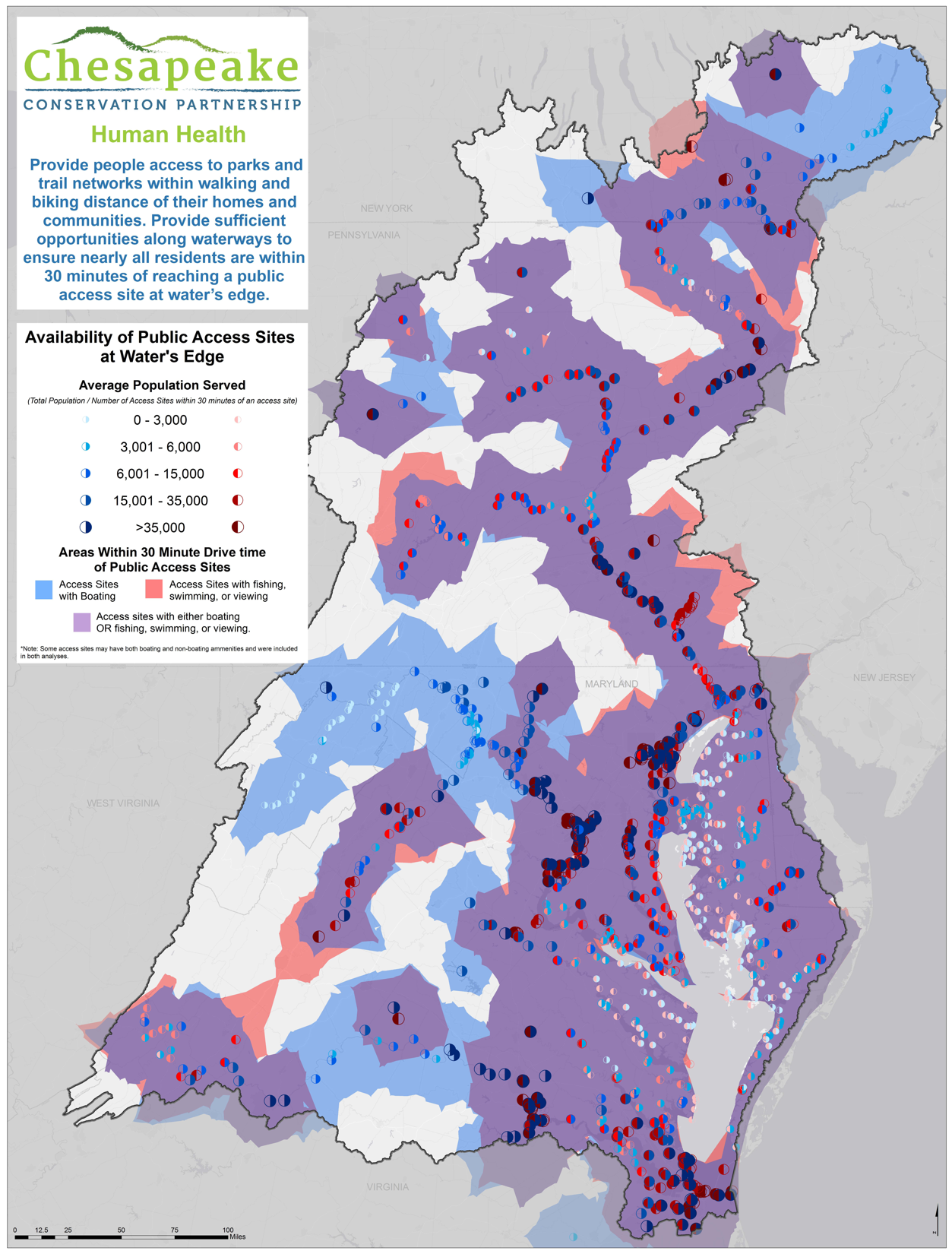Public Health
Our Goal
Protect, conserve, and enhance lands that support equitable public health for all, with an urgent focus on underserved communities, both urban and rural:
- safeguard drinking water protection areas;
- provide various types of neighborhood green spaces (interconnected where feasible) with a diversity of uses to enhance overall public physical, emotional, mental, and spiritual health;
- ensure all people have access to wooded areas, parks, trails and/or public green spaces within a ten minute walk; and
- provide public access sites along Chesapeake Bay waterways within 30 minutes for all.
Nature’s role in protecting our air and water supplies is well known but not always acted upon equitably. Research continues to accumulate on the health benefits of being in and near nature. We need to accelerate protection of the lands and waters that will facilitate and sustain a higher quality of life, equitably, and in underserved communities. We need safe places in our communities to walk, run, sit, play, read, rejuvenate, and reconnect. We need places that integrate trees everywhere to cool and clean our air, protect our drinking water, and keep us healthy. We need an interconnected network of trails, pocket parks, big parks, and natural areas. We need access to the water, to put in a boat or a canoe, to swim, to fish, to camp nearby. We need these places as a daily part of our lives — so they can make us active, healthy, and connected, as individuals and communities.
Where We Stand
In 2022, the Climate and Economic Justice Screening tool assessed and identified communities that are disadvantaged according to updated Justice40 Initiative criteria. As of 2022, 2,266,052 acres of conserved lands were in disadvantaged communities.
Out of the large, unprotected parcels of land over 300 acres in size in the watershed, 1,022,918 acres (31.6%) are in disadvantaged communities. However, small parcels of protected lands in urban areas provide large human health benefits and are also important.
The map suggests two observations:
- Most people living within a wide swath of land near the bay and its tributaries are within a 30 minute drive of one or more public access sites.
- This does not mean that existing access sites within a 30 minute drive have the capacity to serve the nearby population. The color-codes of average population served by each access site suggest that sites in many areas serve a high number of people. This is a potential indicator of capacity issues and suggests strategic approach to access development is warranted. Some site managers report many sites routinely fill to capacity early on weekend days; this includes some “destination sites” in more rural areas (e.g. a number of state parks).
According to the Chesapeake Bay Program, in total, there are 1,387 public access points that provide permanently protected public access to the main tributaries throughout the watershed. Most people living within a wide swath of land near the bay and its tributaries are within a 30-minute drive of one or more public access sites. However, not everyone lives within equitable access to green space, and as our green equity mapping shows, too many are not within walking distance of a public park.
Explore the web map here.

